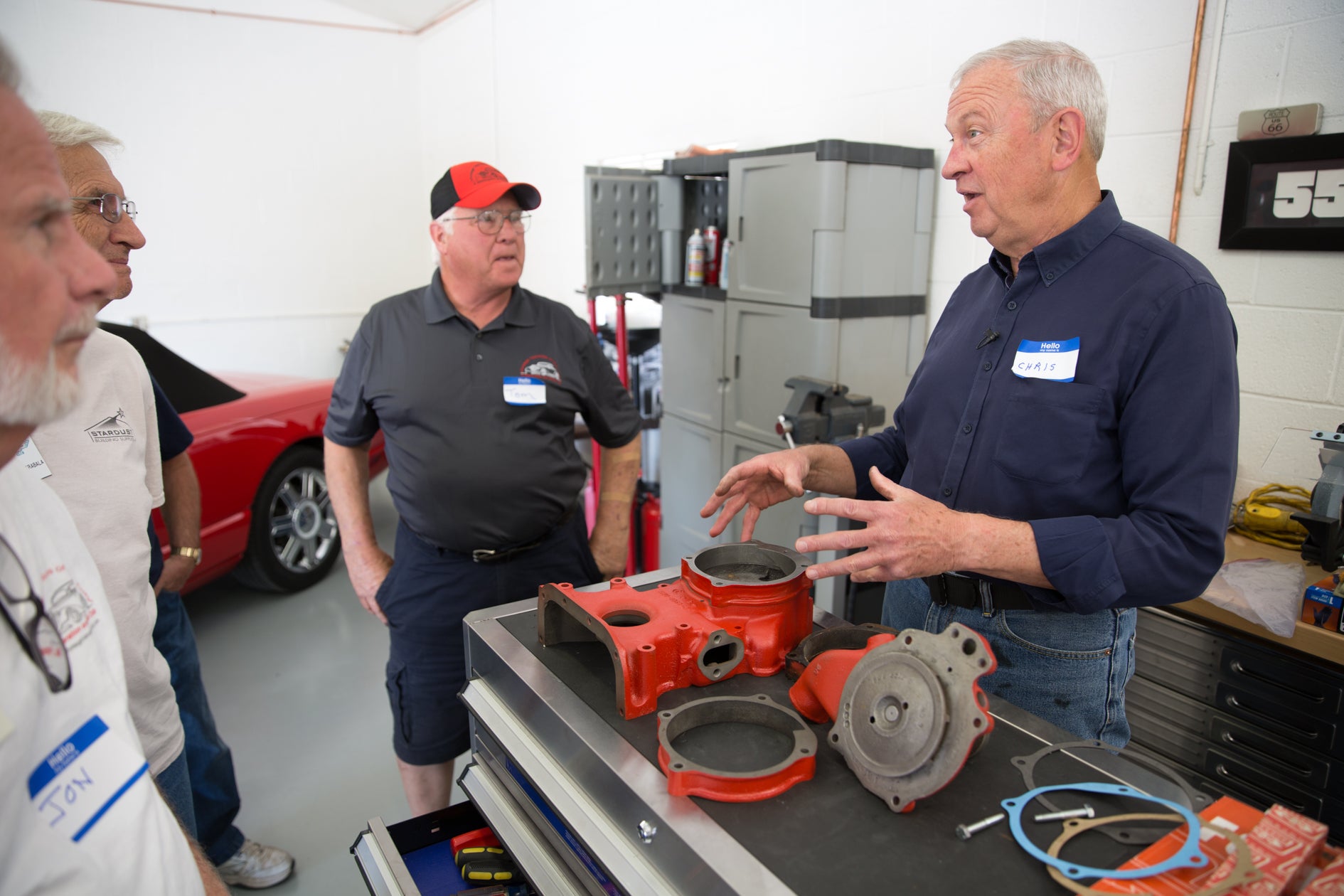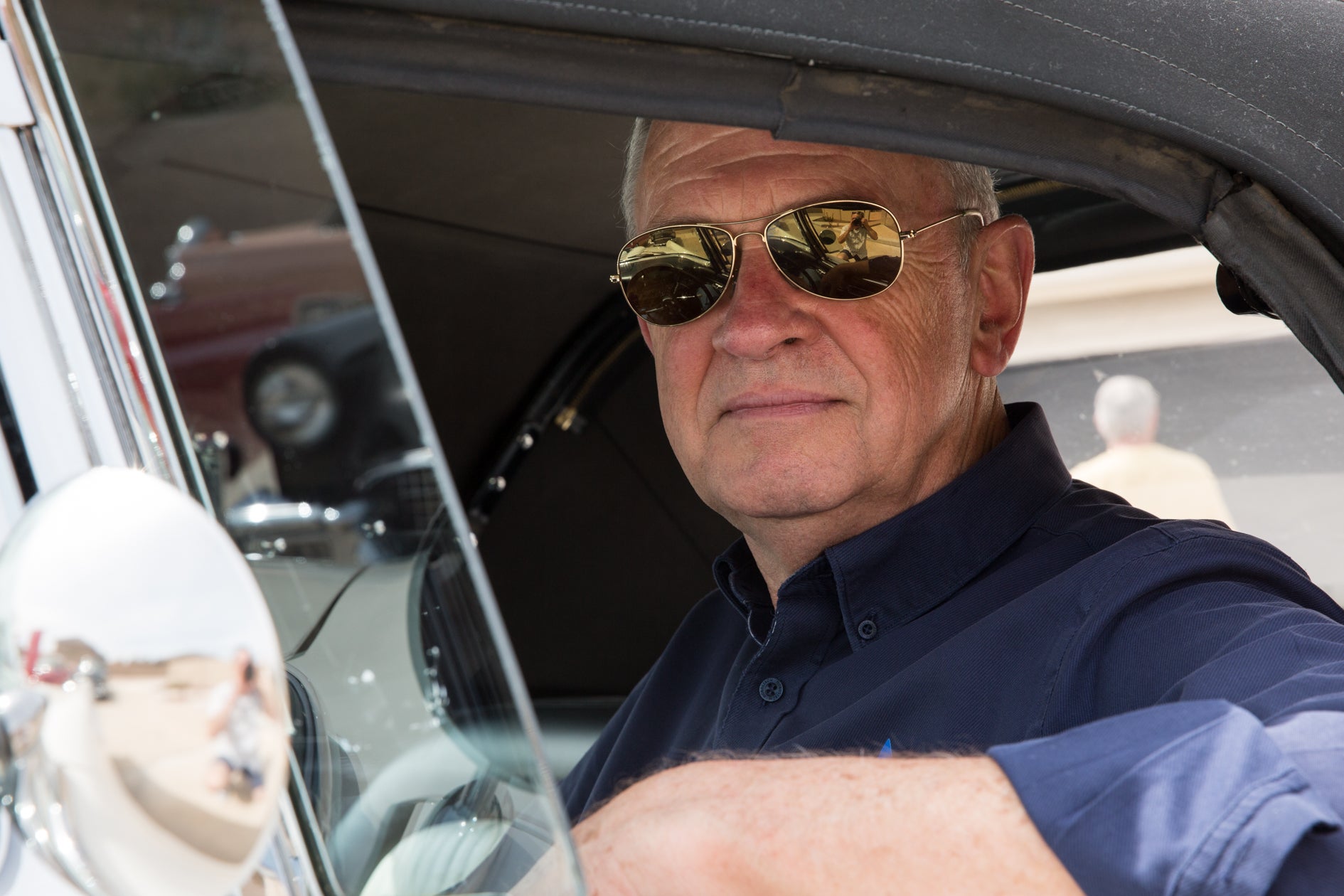Editor's note: This story is being highlighted in ASU Now's year in review. Read more top stories from 2018 here.
Most people go to college to broaden their horizons. U.S. Air Force veteran Christopher Ames went back to Arizona State University with a laser focus to solve one particular problem.
It started in 2003 when the now-68-year-old attended an auto auction with the intention of buying a model of his first car — a 1964 GTO. But when the bidding quickly soared past his price limit, the GTO went home with someone else.
But the auction was not an entire loss. His wife, Sharon, had seen a couple of classic Ford Thunderbirds she liked, and Ames ended up with the winning bid on a 1956 model at a not-too-unreasonable price. After he got the pink slip and keys, he found out the reason why the car was so affordable: They tend to overheat.
“The classic Thunderbird is an icon of American automotive engineering,” Ames said. “But mechanically, this was a pretty sad Thunderbird.”
Video by Ken Fagan/ASU Now
So sad in fact that Ames barely drove it off the auction lot before the chrome-and-metal beast began shaking and wanderingWandering is an automotive term for a steering action where the vehicle moves or rambles from a fixed course without positive control.. He took the first exit he could find and delicately drove it home using surface streets. He also learned later that it often overheated, a commonly known malady of the classic Thunderbirds.
Over the course of five years, Ames corrected all the mechanical problems with the car. He swapped out the engine with a correctly sized one he had completely rebuilt. But still he faced the overheating problem — even in a short, early morning Thanksgiving Day parade.
“When you are carrying beauty queens in the Veterans Day Parade, and the car overheats, it is embarrassing,” Ames said. “The car couldn’t even last 20 minutes without overheating, which makes it a non-player.”
Finally, the car overheated in a 2013 caravan to Tucson, rupturing the heater control valve and leaving Ames alongside the road. That event also damaged the engine, which had only 7,000 miles on it. Ames had reached his boiling point. It was time to fix the problem or sell the car. He opted for the former.
Christopher Ames explains the redesign of the engine spacer he created with the help of an ASU engineering class. Photo by Ken Fagan/ASU Now
“I have a mission commitment that some people believe is a character flaw,” said Ames, a retired software engineer. “If you tell me something can’t be done, it’ll drive me crazy until I find the solution.”
After he removed the engine from the car and completely disassembled it, Ames spent most of a day examining every component, and after not finding anything for several hours, he sat down to rest. Looking at part of the water pump from this lower vantage point, he saw it was not designed to channel the water into the engine. This stops the flow of the coolant to the engine at low engine speeds and slowed it at higher engine speeds.
The solution, Ames determined, was actually a question: what is the most effective and elegant design change to address the problem? He knew he lacked the theoretical knowledge to address the issue, so Ames enrolled in “Introduction to Thermal and Fluids Engineering” taught by Mark Miner, a mechanical engineer in the Ira A. Fulton Schools of Engineering at ASU.
Miner said Ames had his full confidence from the very beginning.
“Chris left me with little doubt that he would achieve his goals,” Miner said. “His confidence in returning to a challenging undergraduate thermodynamics course in the service of his idea spoke very well of his confidence and capacity.”
Since Ames was going to be on campus three days a week, he decided to take a couple of other courses that met on those days — Arizona Political Systems and World Politics: Political Realism. He said they proved to be interesting and welcome academic diversions.
Ames spent the next two years experimenting and testing a voluteVolute is a term for a fluid flow path in pumps. extension that corrects the coolant flow problem. That redesigned part — the A-432 Spacer — is now with the United States Patent Office for review.
Christopher Ames had no problems with overheating when he drove his Thunderbird, complete with new spacer, to New Jersey and back last year. Photo by Ken Fagan/ASU Now
Mechanic Don Henderson, who has installed the spacer on a couple of classic Thunderbirds, believes Ames has cracked the code.
“Once I saw the part, I knew it would work,” said Henderson, who helped Ames during the testing period. “I’ve seen these cars overheat for decades, but I believe Chris has finally solved the problem.”
But the proof is on the street. Ames made a 5,000-mile round-trip journey to New Jersey last year to attend a Thunderbird convention. He said it went off without a hitch. He also drove his Thunderbird in last year’s Thanksgiving Parade in Fountain Hills, and the car stayed cool, as did Ames and the Vietnam veteran honoree riding with him.
Ames also received approval from the most crucial judge — his wife of nearly 50 years.
“At first I thought this whole thing was ridiculous because it took up a lot of time,” Sharon Ames said. “Then I thought, ‘Well, I guess it’s better than him hanging out at a bar somewhere.’ I am grateful for the way it has all turned out.”
Video by Ken Fagan/ASU Now
Top photo: Christopher Ames shows off the re-engineered part for his 1956 Thunderbird engine, the A-432 Spacer, in front of the medallion of the car that started his journey to a thermal fluids class at ASU. Photo by Ken Fagan/ASU Now
More Science and technology

ASU water polo player defends the goal — and our data
Marie Rudasics is the last line of defense.Six players advance across the pool with a single objective in mind: making sure that yellow hydrogrip ball finds its way into the net. Rudasics, goalkeeper…

Diagnosing data corruption
You are in your doctor’s office for your annual physical and you notice the change. This year, your doctor no longer has your health history in five-inch stack of paperwork fastened together with…
Large-scale study reveals true impact of ASU VR lab on science education
Students at Arizona State University love the Dreamscape Learn virtual reality biology experiences, and the intense engagement it creates is leading to higher grades and more persistence for biology…




